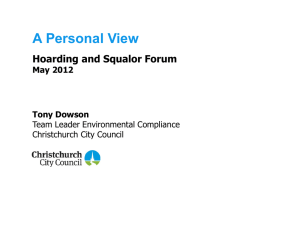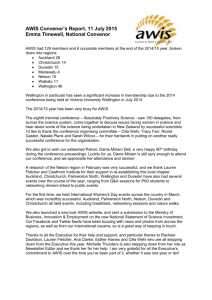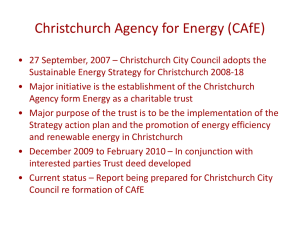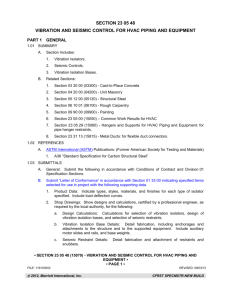Section 3 - Canterbury Earthquakes Royal Commission
advertisement
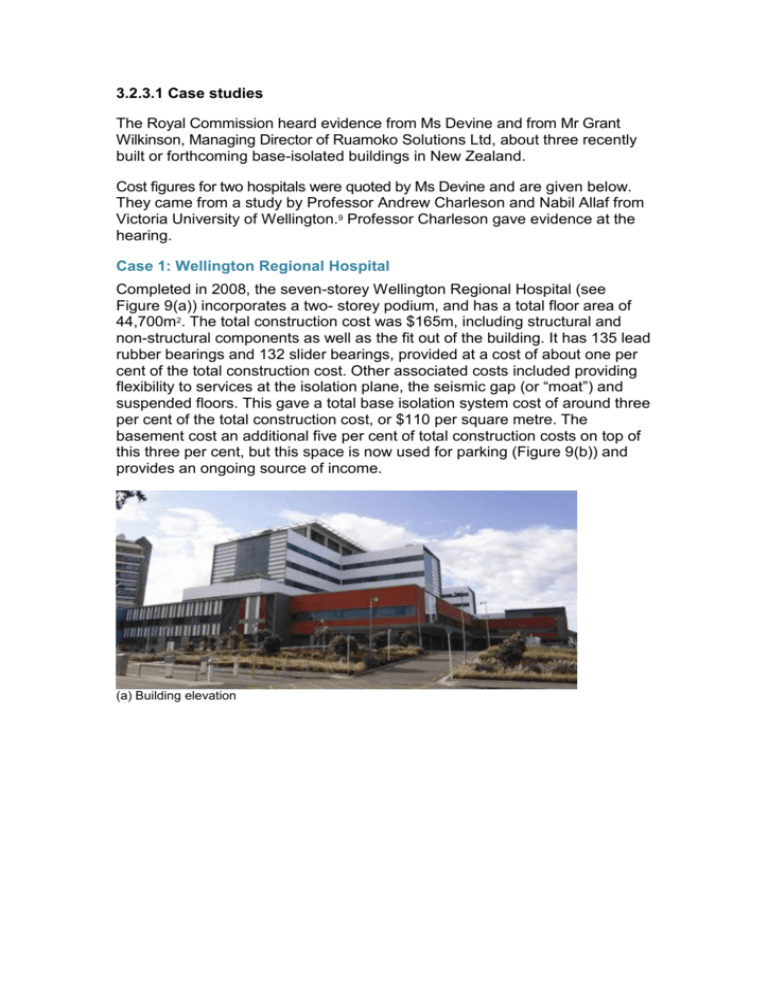
3.2.3.1 Case studies The Royal Commission heard evidence from Ms Devine and from Mr Grant Wilkinson, Managing Director of Ruamoko Solutions Ltd, about three recently built or forthcoming base-isolated buildings in New Zealand. Cost figures for two hospitals were quoted by Ms Devine and are given below. They came from a study by Professor Andrew Charleson and Nabil Allaf from Victoria University of Wellington.9 Professor Charleson gave evidence at the hearing. Case 1: Wellington Regional Hospital Completed in 2008, the seven-storey Wellington Regional Hospital (see Figure 9(a)) incorporates a two- storey podium, and has a total floor area of 44,700m2. The total construction cost was $165m, including structural and non-structural components as well as the fit out of the building. It has 135 lead rubber bearings and 132 slider bearings, provided at a cost of about one per cent of the total construction cost. Other associated costs included providing flexibility to services at the isolation plane, the seismic gap (or “moat”) and suspended floors. This gave a total base isolation system cost of around three per cent of the total construction cost, or $110 per square metre. The basement cost an additional five per cent of total construction costs on top of this three per cent, but this space is now used for parking (Figure 9(b)) and provides an ongoing source of income. (a) Building elevation (b) Parking area with base isolators Figure 9: Wellington Regional Hospital (source: Andrew Charleson) Case 2: Christchurch Women’s Hospital The Christchurch Women’s Hospital was opened in 2005 and is shown in Figure 10(a). The evidence given to the Royal Commission was unclear as to its total construction cost: that was either $50 million or $60 million. The building has a total floor area of 20,000m2 spread over nine levels. It was designed to withstand an earthquake with an expected return period of 2500 years. Mr Wilkinson stated that in selecting base isolation, the building owners were mindful of the added seismic security that the system brought. During the February earthquake, scratch marks were left on steel plates bridging the seismic gap. These marks indicated that lateral movements of ±120mm had occurred. A structural inspection report showed that the building performed as intended, sustaining only minor structural damage. It continued to be operational after the February earthquake. Some damage was documented that was potentially a consequence of the vertical accelerations, which were not isolated by the lead rubber bearings. At about $10,000–$20,000 per isolator the cost amounted to a little under a million dollars, or about one to two per cent of the total construction cost. Additional costs involved architectural features (that is, stairs, elevators, seismic gap), utility and engineering design and a suspended floor above the isolators, all of which would not have been needed in a conventional building. (a) Building elevation (source: Andrew Charleson) (b) Lead rubber bearing (source: Buchanan report) Figure 10: Christchurch Women’s Hospital Case 3: St Elmo Courts rebuild project Mr Wilkinson gave evidence about the St Elmo Courts rebuild project, on Hereford Street in Christchurch. At the time of the hearing, in March 2012, this was at the detailed design stage and was expected to be the first baseisolated office building in the South Island. It is an example of a rebuild occurring on the Christchurch soils. Despite the site having good subsurface conditions, high scaling factors have been used in design for predicting the ground motions at the site. The cost of base isolation for this building was assessed in the design stage to be in the order of five per cent of the total construction cost. The indicative costs stated above are only the direct costs and did not take into account any savings that might arise from using base isolation. In addition, given that the study by Professor Charleson was on hospitals, which have relatively costly mechanical services, the cost of base isolation as a percentage of the total building cost will be somewhat less than for other building types.
